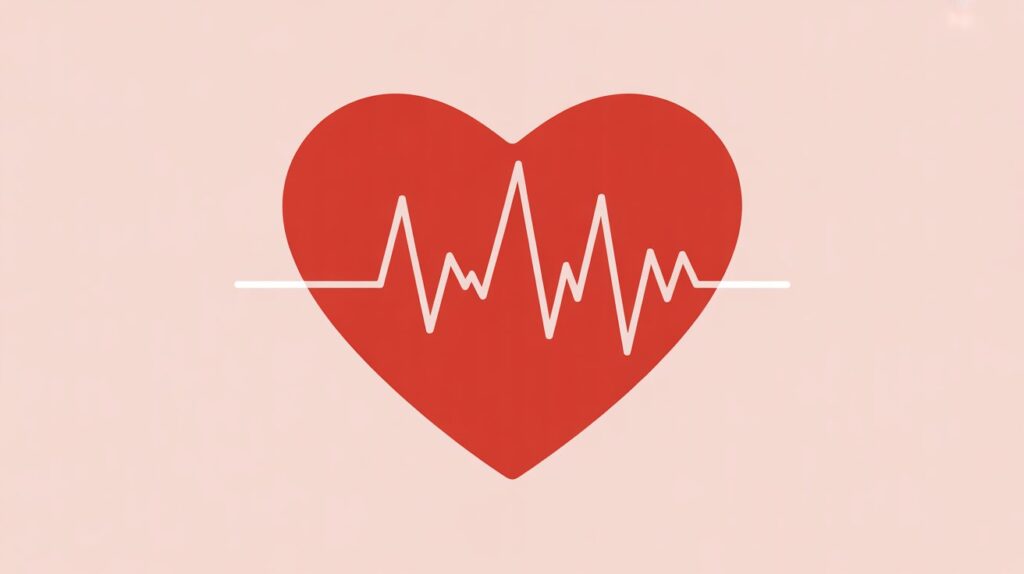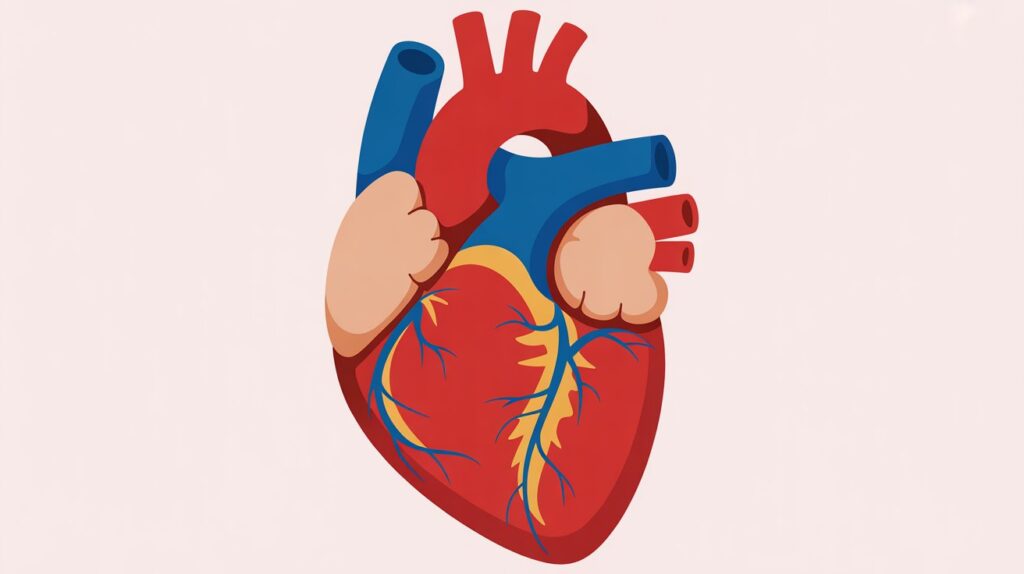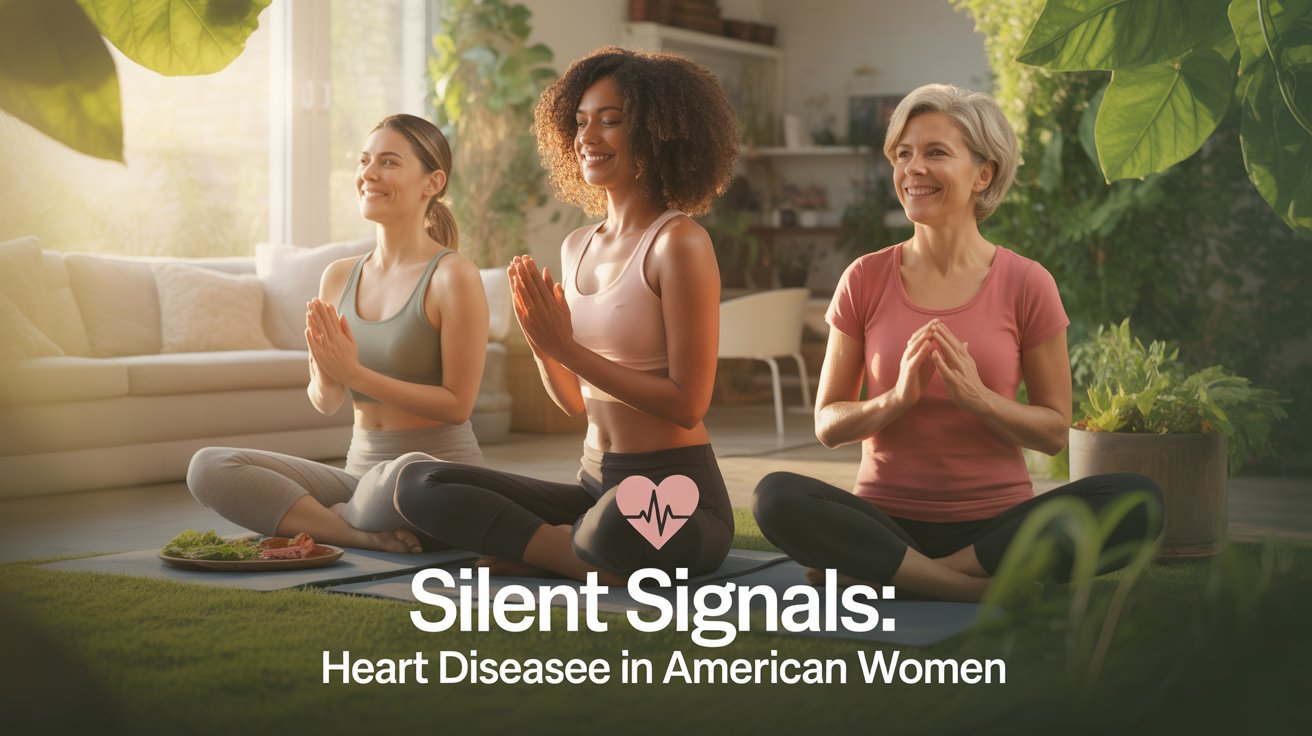Heart disease isn’t just a “man’s problem.” Women account for a large share of cardiovascular disease (CVD) cases and deaths worldwide, but signs can look different, risks can come from surprising places (like pregnancy), and women are too often under-diagnosed or undertreated. This clear, practical guide explains the most important signs of heart disease in women, how risk differs by age and race, what to ask your clinician, and simple prevention and first-aid steps you can use today.
Key takeaways up front
- Heart disease is the leading cause of death worldwide and remains the top killer in the U.S. and UK. (World Health Organization, CDC)
- Women may have atypical heart-attack symptoms (fatigue, nausea, jaw or back pain, shortness of breath) more often than classic crushing chest pain; don’t ignore them. (www.heart.org)
- Some female-specific risk factors—pregnancy complications (preeclampsia, gestational diabetes), autoimmune disease, early menopause—raise lifetime heart risk and deserve attention. (www.heart.org, NHLBI, NIH)
Why this matters now (the numbers that change policy and clinics)
- Globally, cardiovascular diseases caused roughly 20 million deaths in recent global tallies — about one in three deaths worldwide. (World Health Organization)
- In the United States, heart disease remains the leading cause of death; in 2023 nearly one million people died from cardiovascular disease (all sexes combined). (CDC)
- In the UK, coronary heart disease is a leading cause of premature death among women and affects millions. Women in some groups are still less likely to be diagnosed early or receive guideline-recommended treatments. (British Heart Foundation, Heart)
Why that matters to you: these are not abstract statistics — they translate into delayed diagnoses, missed prevention opportunities, and avoidable deaths. Recognising early and atypical signs in women saves lives.
How heart disease in women can look different
Classic “man” presentation of a heart attack—intense central chest pain radiating to the left arm—is absolutely possible in women. But several common variations matter:
Common or atypical signs women may experience:
- Unusual fatigue or weakness for several days.
- Shortness of breath with or without chest discomfort.
- Nausea, indigestion, or vomiting that feels unlike usual heartburn.
- Pain in the neck, jaw, shoulders, upper back or stomach rather than central chest pain.
- Lightheadedness, fainting, or palpitations.
- Cold sweat or an overwhelming sense of anxiety/doom.
Because symptoms can be subtler and spread across areas, women sometimes dismiss them or clinicians may initially attribute them to non-cardiac causes. If new, unexplained symptoms appear — especially with several symptoms together — get evaluated urgently. (www.heart.org, CDC)

Who’s at higher risk — factors especially relevant for women
Traditional risks (also important for women): high blood pressure, high LDL cholesterol, smoking, diabetes, obesity, physical inactivity, poor diet, and age.
Female-specific or female-predominant risk signals:
- Pregnancy complications: preeclampsia, gestational hypertension, gestational diabetes and preterm birth each predict higher rates of later cardiovascular disease. Women with those histories should have earlier and more frequent heart-health checks. (www.heart.org, PMC)
- Autoimmune diseases: lupus and rheumatoid arthritis increase CVD risk and are more common in women.
- Menopause & early menopause: the hormonal transition and earlier cessation of ovarian function accelerate some cardiovascular risks for some women.
- Psychosocial stress & socioeconomic factors: disparities matter — Black and Indigenous women in high-income countries often carry higher risk and face worse outcomes due to structural inequities in care access and treatment. (British Heart Foundation)
Bottom line: a full heart-risk assessment for women should include pregnancy history, autoimmune conditions, and social determinants in addition to standard risk factors.
How doctors assess heart risk in women (what to expect)
When you see a clinician about possible heart disease, common elements of the workup include:
- History & symptom log — bring a one-page note of new symptoms, timing, and triggers.
- Physical exam — blood pressure, heart sounds, weight/BMI, and signs of fluid retention.
- Blood tests — cholesterol profile, fasting glucose or HbA1c, kidney function, and cardiac biomarkers if acute symptoms exist.
- ECG (electrocardiogram) — baseline electrical activity if chest pain or palpitations are present.
- Imaging or stress testing — if needed, noninvasive tests like echocardiography or exercise/pharmacologic stress tests or CT coronary angiography.
- Personalised risk discussion — treatment plans for cholesterol, blood pressure, diabetes and lifestyle interventions tailored to a woman’s age, pregnancy history and preferences. (CDC, NHLBI, NIH)
If you feel dismissed, ask politely for a second opinion or a cardiology referral — advocacy matters.
Prevention & practical hacks that work (what to do this month)
Prevention is powerful. Here are practical, evidence-based moves you can start today:
- Know your blood pressure — aim for control; uncontrolled hypertension is the single biggest modifiable risk. Home monitors are inexpensive and helpful; bring averages to your GP.
- Get your cholesterol checked — discuss statin therapy if your 10-year risk is elevated; treatment decisions are personalised.
- Screen for and manage diabetes or prediabetes — even modest glucose elevation raises risk.
- Stop smoking — it cuts CVD risk dramatically; use NHS/CDC quit supports or prescription aids.
- Move regularly — 150 minutes/week of moderate activity (or 75 minutes vigorous) plus two strength sessions per week. Even brisk walks reduce risk.
- Limit alcohol & sugar — keep within recommended limits; avoid binge drinking.
- Manage weight & sleep — abdominal fat and poor sleep both raise risk; small, sustained changes beat yo-yo diets.
- Address mental health & stress — anxiety and depression worsen cardiac outcomes; therapy, exercise, and social supports help.
- If you had pregnancy complications, ask for early long-term heart checks — blood pressure and metabolic risk can emerge earlier than expected. (www.heart.org, NHLBI, NIH)
Small habit stacks matter: one 20-minute walk after dinner most days plus swapping refined carbs for whole grains can move your risk needle.

What to do in an emergency — quick steps
If you or someone else has sudden chest pain, shortness of breath, fainting, severe sweating, or sudden collapse:
- Call emergency services immediately (911/999) — don’t wait to “see if it passes.”
- If the person becomes unresponsive and not breathing normally, start CPR and ask a bystander to fetch an AED (defibrillator) if available.
- Chew an aspirin (300 mg adult dose) if the person is conscious and not allergic — this can reduce clotting damage while EMS is en route (follow local emergency guidance).
- Keep the person calm, seated or lying down, and monitor breathing until help arrives.
Time is muscle — early action saves heart tissue and lives.
A 1-minute self-risk quiz
1-Minute Heart Risk Check — Women
Answer 6 quick questions and get a printable checklist to take to your clinician.
Diagnosis and treatment — what modern care looks like
If tests show coronary artery disease or other cardiac problems, common treatments include:
- Lifestyle therapy (exercise, weight management, smoking cessation, dietary improvements).
- Medications to control blood pressure, lower LDL cholesterol (statins, PCSK9 inhibitors for some), treat diabetes and prevent clotting.
- Procedures such as angioplasty/stent or coronary artery bypass grafting when blockages require mechanical treatment.
- Cardiac rehabilitation — supervised exercise and education after heart events significantly improves outcomes, and women benefit just as much as men (but are under-referred). (www.heart.org, CDC)
Ask your clinician about cardiac rehab referral — it’s proven to help recovery and long-term prevention.
Race, age and equity — why outcomes differ
Racial and socioeconomic disparities persist: in many high-income countries, women from Black, Indigenous, and some minority ethnic groups experience higher CVD rates and worse outcomes due to structural barriers (access to care, delayed diagnosis, differences in treatment). Age matters — while absolute risk rises with age, younger women with pregnancy-related complications and autoimmune disease can be “hidden” at high risk and need earlier attention. Public health strategies aim to reduce these gaps by improving screening and community outreach. (British Heart Foundation, Heart)

A simple 30-day heart-health starter plan (what to do in a month)
Week 1 — Baseline & monitoring
- Buy or borrow a validated BP monitor and record morning/evening readings for a week.
- Start a symptom log (two lines per day: energy and any chest/shortness of breath).
Week 2 — Small habit changes
- Add 20 minutes of moderate activity 5 days this week (brisk walk).
- Swap sugary drinks for water and add one extra vegetable portion daily.
Week 3 — Clinical check
- If you have risk factors or abnormal BP, book a GP appointment. Bring your BP log and symptom diary.
- Ask about cholesterol, diabetes testing and whether your pregnancy history or autoimmune disease modifies your risk.
Week 4 — Sustaining moves
- Join a local group/walking buddy or a heart-healthy cooking class (many community centers offer low-cost options).
- If your clinician starts meds, schedule a 6–12 week review.
When to go to the ER — quick red flags to act on immediately
- Sudden, severe chest pain or pressure.
- Chest pain with fainting, severe shortness of breath, sudden sweating, nausea, or collapse.
- New, severe fainting or neurological symptoms.
If any of the above occur, call emergency services without delay.
Final words — your next steps
- Listen to your body. Unusual fatigue, breathlessness, jaw/neck/back discomfort, or persistent indigestion are signals — especially if new.
- Bring evidence to your clinician. A 2-week symptom and BP log plus medication list makes your visit productive.
- Act on prevention. Small lifestyle changes and routine screening make the biggest difference at population and personal levels.
Official government & public-health resources (click to open)
- Centers for Disease Control and Prevention (CDC) — Heart Disease Facts & Women and Heart Disease: https://www.cdc.gov/heart-disease.
- National Health Service (NHS) — Coronary heart disease: https://www.nhs.uk/conditions/coronary-heart-disease/.
- World Health Organization (WHO) — Cardiovascular diseases (CVDs) overview: https://www.who.int/health-topics/cardiovascular-diseases.
- National Heart, Lung, and Blood Institute (NHLBI/NIH) — Women and Coronary Heart Disease: https://www.nhlbi.nih.gov/health/coronary-heart-disease/women
Medical & editorial disclaimer
This article is for educational purposes only and does not replace personalised medical advice, diagnosis or treatment. If you have chest pain, breathlessness, fainting, or other severe symptoms, call emergency services immediately. For health checks, screening or questions about medications, consult your GP or an appropriate medical specialist. All images used in this article are royalty‑free or licensed for commercial use and are provided here for illustrative purposes.
